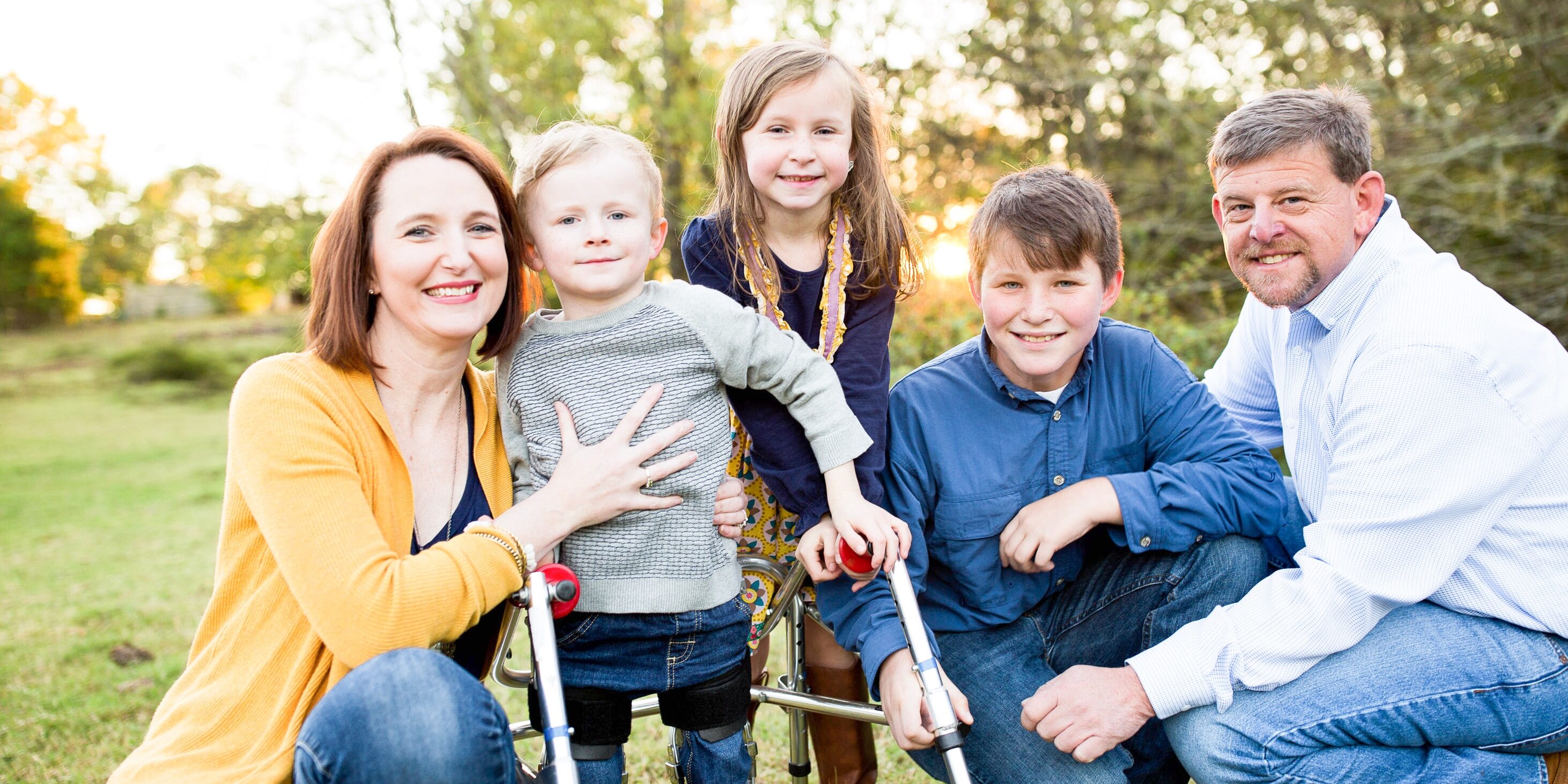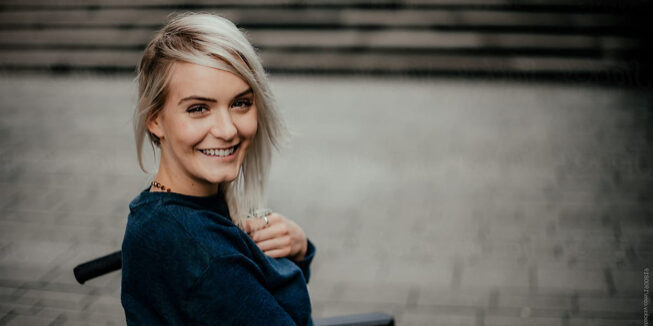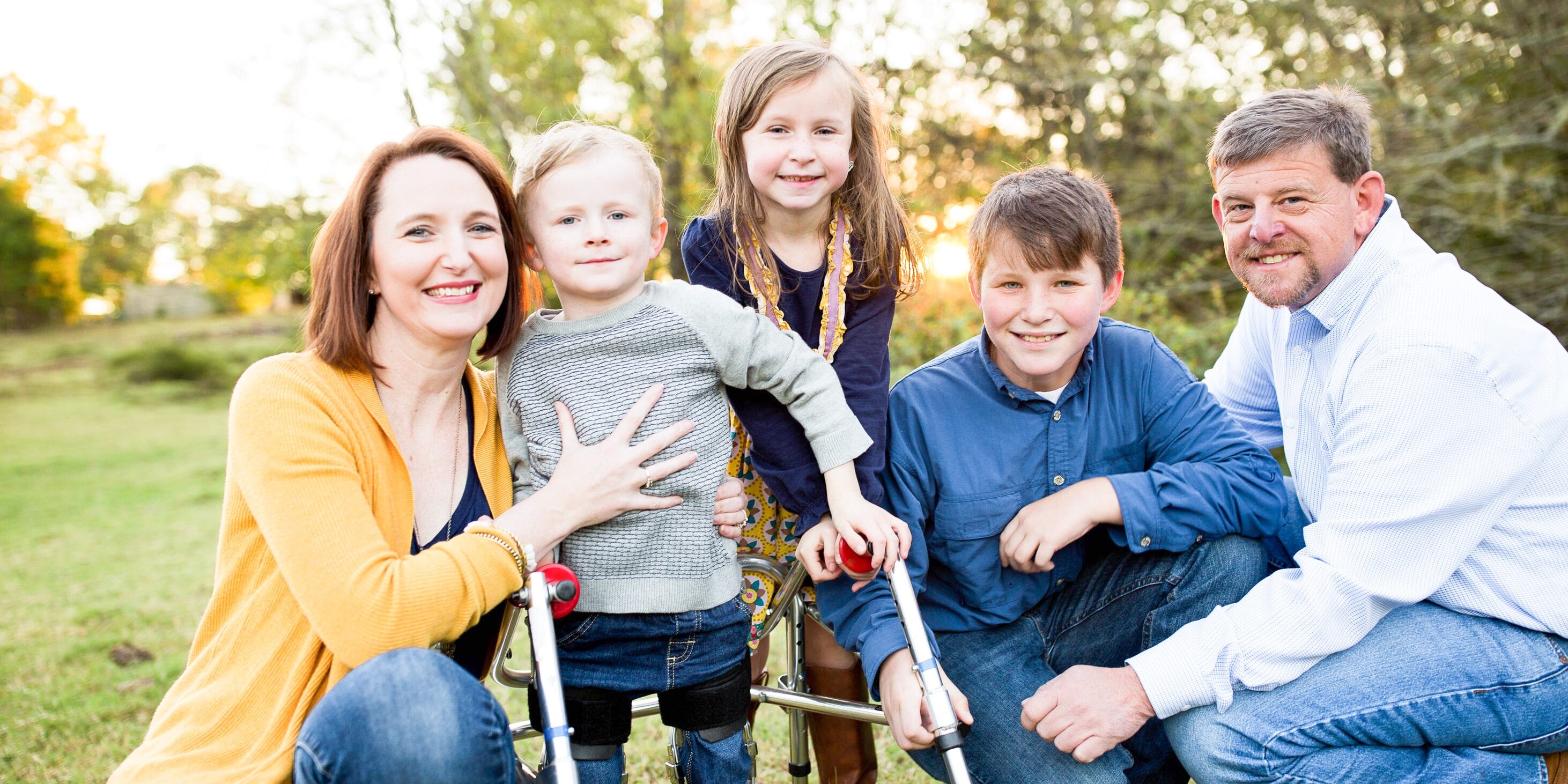Success Story
Andrew Peffley
Placeholder Subtitle
“He sat in my lap and used the RT300 and we were so thrilled! He was on for 20 minutes the first time, and then each time he used it we’d keep him on for longer.”
— Terri Peffley
When Terri was 19 weeks pregnant, she went in for a routine ultrasound. She wasn’t worried. “When you’re pregnant, you envision your child will be perfect,” she says.
“When you find out something like that, it’s like you say good-bye to who you thought your child was. And then you get acquainted with who he really is,” Terri remembers.
For the final five months of her pregnancy, Terri knew Andrew would be born with difficulties—but she didn’t know the extent. “I’m an occupational therapist, so I had a good idea of what we’d be facing, but I didn’t know how much function he’d have. I didn’t know how bad it would be and what exactly we’d need to work on. It was a very hard time—not knowing.
“Once Andrew was born, we found out he could move his knees, which was a great sign. I felt like I was in a race against time to get him walking.”
As an OT, Terri spends her professional life around people with disabilities. She knew the hard road that lay ahead for her son. “I’d seen so many kids in wheelchairs have to sit on the sidelines and watch the other kids. This is a walking world. And Andrew was going to be growing up in schools made for kids who walk, with playgrounds that have grass and mulch—playgrounds that aren’t friendly for wheelchairs. I was driven to find ways to make him stronger.”
And that’s just what Terri did. She looked for every possible treatment to help her son. “Andrew’s been a guinea pig. I figured if a new therapy or technology wasn’t going to hurt him, then we were going to give it a try. My mindset is to always, always work toward independence.”

That determination has led Terri to think outside the experience of Andrew’s own doctors. “I wanted to push Andrew further than his original therapist did. That’s why we got involved in baby robotics and eventually in FES. I gave Andrew the chance to be mobile before I even knew if he’d be capable of it. It was especially important because I knew mobility affects cognitive development too.”
When Andrew was a year old, Terri heard about the use of RT300 FES at Kennedy Krieger. “I knew I had to get him there.” Terri researched the RT300 and went to see it, but Andrew was still too small to actually use it. That—of course—didn’t deter his mother.
“We did a lot of stimulation anyway of single muscle groups. We did as much as possible. We had him on the treadmill with cords attached all over. I called him Spider-Man because of all the cords—he was always a tangled web! We did our best to stimulate the contractions at the right time but it was a herculean event. It was really hard to do on my own, without his PT there.” Terri couldn’t wait for Andrew to be big enough for the RT300 as it would stimulate his muscle groups in the proper sequence automatically.
Terri is making sure that happens.
Terri Peffley, mother of Andrew Peffley




